
What is carbon capture?
Carbon dioxide (CO2) emissions generated by human activities have led to an accumulation of greenhouse gases in the atmosphere that is causing an increase in
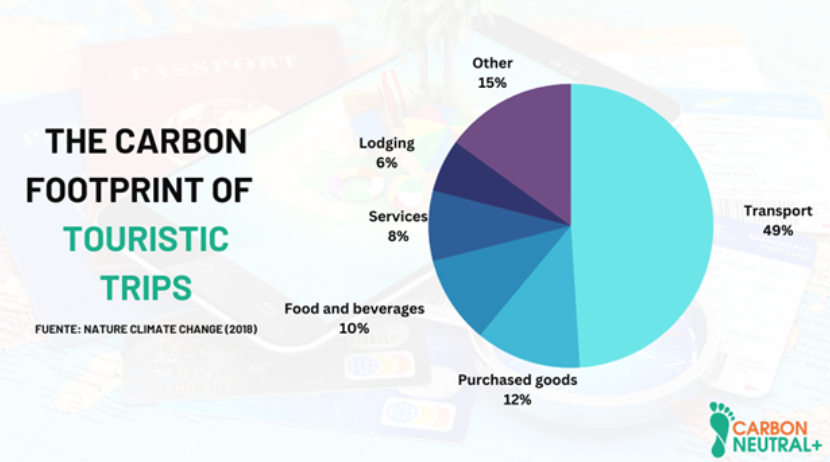
Sustainable travel is the perfect way to travel without leaving a negative impact on the places we visit. Traveling more sustainably goes beyond opting for environmentally friendly modes of transportation and choosing a responsible hotel; it’s about integrating sustainable practices into all aspects of travel.
Sustainable travel can have a positive impact on both the people and places visited, and provide a more meaningful travel experience. Whether for tourist travel or business travel, there are many options to travel in a sustainable way.
From supporting local businesses to reducing your carbon footprint, sustainable travel can help you get the most out of your trips while making a positive contribution to the places you visit.
In this article we’ll tell you what sustainable travel is and how you can ensure that your trips have a lasting positive effect on the environment and the communities you visit.
Sustainable travel is a way of traveling that seeks to preserve the environment, culture and economy of a destination. It is an activity that respects the local community and its resources, while avoiding any environmental damage or disturbance to the natural environment. It focuses on having a positive impact on the places visited and the communities that live there.
Sustainable travel includes a variety of practices, such as minimizing air travel, reducing waste and supporting local economies. It is an approach to travel that focuses on minimizing the environmental, social and economic impact of both tourism and business travel.
The most important aspect of sustainable travel is making conscious choices during the planning and execution of the trip. This includes considering the environmental impact of the mode of transportation, accommodations and activities. Spending time researching and planning responsible travel is essential to sustainable travel and allows you to ensure that your trip does not have a negative impact on the environment.
For example, choosing sustainable accommodations, eating locally grown food, and using public transportation are simple actions that significantly decrease the negative impacts of travel. Finally, sustainable travel encourages travelers to support local businesses by purchasing products made in the region, and to respect the culture and traditions of the places they visit.
The benefits of sustainable travel are numerous. Some of them are:
For business travel, the largest impact in terms of environmental impact is transportation. Much of this travel is by air, and more frequently than tourist travel (especially for senior workers). The aviation industry currently accounts for 3.5% of GHG emissions contributing to climate change.
By 2020, global emissions from air travel were reduced by 75%. This has prompted many companies, such as PWC or Salesforce to reduce their employees’ outbound travel in order to reduce their scope 3 emissions.
Currently, the tourism industry is responsible for 8% of global greenhouse gas emissions. In recent years, this percentage has increased and total emissions associated with tourism are expected to rise by approximately 4% per year in the coming years.
According to Nature magazine, the carbon footprint associated with tourism activities is 1kg CO2eq per dollar invested. This value is higher than both the footprint of the manufacturing (0.8 kg CO2eq per USD) and construction industries (0.7 kg CO2eq per USD), as well as the average footprint of industries in general, of 0.75 kg CO2eq per USD.
The growth of the tourism industry has put the spotlight on the need to incorporate sustainable practices, both from the tourists’ side and also from the countries and businesses that host them.
A recent study conducted by the travel agency Booking, which interviewed more than 20,000 tourists in 28 countries, showed that 53% of travelers are looking to travel more sustainably. In turn, more than two-thirds of the industry (69%) will seek to offer more sustainable options for tourists in the near future.
The World Tourism Organization (UNWTO), a UN agency, also issues certain guidelines for the sustainable development of tourism. The UNWTO principles refer to three aspects that must be balanced to ensure the long-term sustainability of the activity:
According to the UNWTO, sustainable tourism should:
While coming from an organization that studies tourism travel, it is important to note that these criteria can be applied to business and non-business travel.
The carbon footprint of travel considers the emissions generated through the supply and demand of goods and services offered.
This indicator includes the following activities:
The following graph shows the average contribution of each of these activities to the total carbon footprint of tourism trips:

The carbon footprint of business travel is similar to that of tourist travel, with some differences:
Here are some recommended actions you can take to make your next trip sustainable:
● Support local businesses.
One of the best ways to make your trip more sustainable is to support local businesses. For example, by buying products from local stores and markets, eating at local restaurants or hiring local guides.
This is because supporting local businesses helps inject money into the local economy and this can have a positive impact on the people and places you visit.
● Minimize your carbon footprint.
Another option to lessen the environmental impact on tourism or business travel is to minimize your carbon footprint. This can include choosing sustainable accommodations, using public transportation whenever possible, and reducing energy consumption.
Carrying a reusable water bottle and avoiding single-use plastics can also help reduce your environmental impact during travel.
● Choose sustainable lodging options.
Choosing a sustainable option for your accommodation can definitely make your trip more sustainable. Sustainable lodging options include eco-hotels, eco-lodges, and eco-campgrounds.
These types of accommodations typically use renewable energy sources, such as solar power, and continually strive to minimize their environmental impact.
Recently, platforms such as Booking have implemented the “sustainable travel” label. There, a logo identifies those accommodations that meet the sustainability requirements dictated by the application. To do so, these accommodations go through a process in which they submit all the necessary documentation and in turn undergo an on-site audit process where it is checked that the accommodation executes the actions that enable it to have the “sustainable travel” label.
This new label is useful because, in case you are making a business trip, it may be difficult to choose one of the “eco-options”. In these cases, you can check whether or not the accommodation to be chosen is categorized as “sustainable travel”, and thus decide where to stay taking this factor into account.
● Be conscious of your food choices.
Eating sustainably can also have a positive impact on your travels. Choosing locally grown food and eating at local restaurants can help support the local economy and encourage employment opportunities for local workers.
● Use sustainable transportation options.
Using sustainable modes of transportation can help reduce your carbon footprint during your travels. Opting to walk or bike whenever possible and using public transportation can help significantly reduce your environmental impact. Renting electric vehicles instead of cars with internal combustion engines is also an option that can help reduce your carbon footprint.
● Offset your carbon footprint.
In the event that there are emissions that you cannot reduce through the above options, the most recommended action is to offset your carbon footprint. Such offsetting will allow you to neutralize the emissions generated during your vacations or business trips by financing reforestation or conservation projects.
If you want to offset the carbon footprint of your vacation or business trip, you can visit our marketplace where we offer different offsetting options.
Conclusions
As the world develops and technology moves forward, it is becoming increasingly feasible for many people to travel in ways that seemed unthinkable decades ago. This has led to a significant increase in travel-related emissions (labor and tourism), and these are predicted to increase in the coming years. In turn, the carbon footprint per dollar invested in the travel industry is higher than the average global industrial footprint.
Sustainable travel represents an ethical way of traveling that seeks to preserve the environment, culture and economy of a destination.
More and more travelers are choosing to travel this way, and this can help create a more meaningful experience while contributing positively to the places visited. From supporting local businesses to minimizing and offsetting your carbon footprint, there are many ways to make your travel more sustainable. This will allow those places we choose for our travels to maintain their conservation status and biodiversity for many years to come.

Carbon dioxide (CO2) emissions generated by human activities have led to an accumulation of greenhouse gases in the atmosphere that is causing an increase in
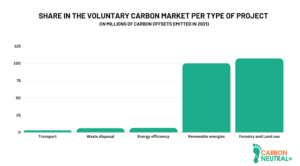
According to the Emissions Gap Report 2022, the growth rate of global greenhouse gas (GHG) emissions has declined over the last decade. Between 2010 and
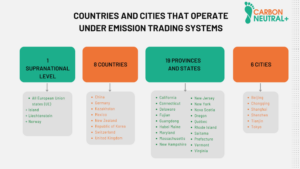
As international agreements related to corporate greenhouse gas emissions (GHG) come into force, the regulations associated with the generation of these emissions increase. This is
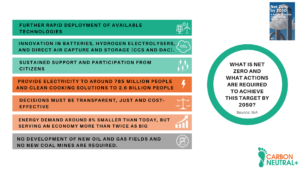
Climate change is one of the greatest concerns of our time. This phenomenon is generating consequences that are difficult to reverse, such as an increase

The Paris Agreement is an international agreement adopted on December 12, 2015 during the United Nations Climate Change Conference (COP21) in Paris, France. One of
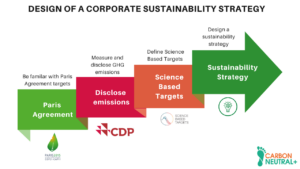
As the world faces the looming effects of climate change, more and more companies are recognizing the importance of adopting sustainable strategies that aim to
| Cookie | Duration | Description |
|---|---|---|
| cookielawinfo-checkbox-analytics | 11 months | This cookie is set by GDPR Cookie Consent plugin. The cookie is used to store the user consent for the cookies in the category "Analytics". |
| cookielawinfo-checkbox-functional | 11 months | The cookie is set by GDPR cookie consent to record the user consent for the cookies in the category "Functional". |
| cookielawinfo-checkbox-necessary | 11 months | This cookie is set by GDPR Cookie Consent plugin. The cookies is used to store the user consent for the cookies in the category "Necessary". |
| cookielawinfo-checkbox-others | 11 months | This cookie is set by GDPR Cookie Consent plugin. The cookie is used to store the user consent for the cookies in the category "Other. |
| cookielawinfo-checkbox-performance | 11 months | This cookie is set by GDPR Cookie Consent plugin. The cookie is used to store the user consent for the cookies in the category "Performance". |
| viewed_cookie_policy | 11 months | The cookie is set by the GDPR Cookie Consent plugin and is used to store whether or not user has consented to the use of cookies. It does not store any personal data. |